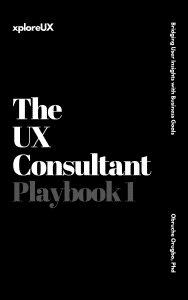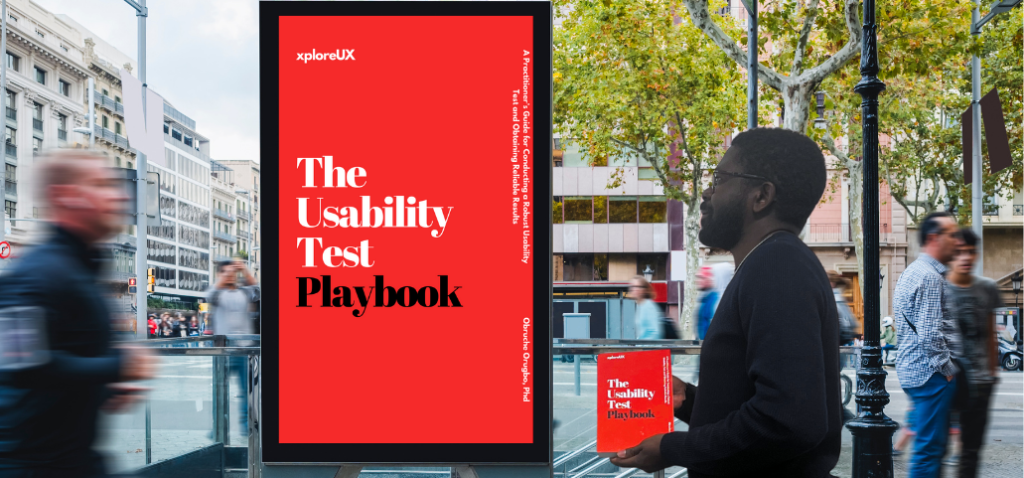
Digital Transformation has become a priority for businesses seeking to remain competitive and relevant. As new technologies arise, organisations must align their goals with changing user expectations to stay ahead. While it can involve anything from cloud adoption to implementing new software systems, a crucial element often overlooked is how these changes truly affect the experience of customers, clients, and employees. By placing user experience at the heart of every strategy, a project can flow more smoothly, achieve higher satisfaction levels, and produce sustained returns on investment.
Digital Transformation covers a wide array of activities, including upgrades to existing processes and entirely new implementations. However, without a clear plan to engage users effectively, businesses risk confusion, wasted resources, and lacklustre results. Implementing UX best practices provides a structured way to analyse user requirements, reduce friction, and refine touchpoints. In essence, UX ensures that every interaction meets user needs intuitively, leading to strong adoption rates and positive sentiment.
With careful UX considerations, teams can reduce complexity and guide people towards confident use of new tools. This approach calls for thoughtful research and planning, but the rewards are significant. When users can navigate platforms effortlessly and find genuine value in them, they become more receptive to subsequent upgrades. In this piece, we will explore the importance of UX in driving better outcomes, outline key principles for successful interface design, and present strategies that simplify operational changes.
Digital Transformation can sometimes appear daunting due to the scope of changes involved. Yet, by placing user experience at the forefront, even the most complex initiatives can be broken down into manageable segments. UX professionals excel at revealing hidden pain points and finding innovative ways to address them. This helps both management and technical teams develop a refined approach that resonates with the intended audience.
When users are given platforms that align with their expectations, they are more likely to embrace the changes. A well-designed UX factors in accessibility, personalisation, and immediate usefulness. It is not enough for a new system to be merely functional; it must also be simple and enjoyable to use. By emphasising these qualities, businesses can reduce the training burden and promote faster overall uptake.
Digital Transformation projects that fail to account for UX run the risk of alienating their target users. A system may offer outstanding features on paper, but if it does not match user mental models, it remains underutilised. Skilled UX designers bridge this gap by conducting user interviews, surveys, and usability tests. These insights inform layout decisions, workflow arrangements, and content strategy. Consequently, the final product is not just technologically advanced but tailored to everyday needs.
Digital Transformation thrives on iterative development guided by user feedback. Regular evaluations allow developers to rectify issues early and hone design elements for maximum impact. UX is a continuous discipline rather than a one-time fix, ensuring that the solution remains relevant amid evolving demands. As part of the process, collaborative communication and open dialogue among team members and end-users foster a shared sense of ownership in the outcome.
Digital Transformation initiatives benefit substantially when guided by core UX principles. One such principle is clarity. Interfaces should present information logically so that users immediately understand where to click, how to proceed, or where to find the next piece of data. Clear labelling, well-structured menus, and consistent colour schemes all serve to ease navigation.
Another essential aspect is consistency. Repeated patterns help people learn a system faster because they do not have to reorient themselves at each step. If the main navigation bar sits at the top of a screen on one page, users expect it to occupy the same position elsewhere. Small but meaningful design details reduce friction and help people stay focused on their tasks rather than grappling with a new interface at every turn.
Digital Transformation requires empathy for users, which ties in with personalisation. The best UX approaches allow people to customise how they engage with a platform. Whether that means adjusting font sizes, toggling between themes, or setting up preferred dashboards, giving users a sense of control fosters loyalty and comfort. Additionally, accommodating diverse devices ensures that the experience remains consistent regardless of whether users access services via desktops, tablets, or smartphones.
A final principle to emphasise is feedback. Offering clear confirmations, warnings, or progress indicators helps users understand the consequences of their actions. Whether they are completing a registration form or finalising an online transaction, timely feedback reassures them that their steps are recognised and validated. Integrating these core UX principles streamlines the adoption of new systems and reinforces a commitment to meeting user needs.
Digital Transformation does not need to create chaos if organisations employ structured strategies from the outset. One effective approach is to begin with a thorough discovery phase that includes stakeholder interviews, user surveys, and an audit of existing systems. By understanding current workflows in detail, UX teams can pinpoint inefficiencies and propose solutions that simplify them.
Prototyping is another valuable strategy. Early mock-ups can help teams and end-users visualise how a final product might look and function. This process minimises risk because it allows rapid experimentation and iteration before substantial resources are invested in development. Prototypes can be tested for usability, enabling designers and developers to refine each interaction based on feedback.
Digital Transformation initiatives also benefit from a well-structured roadmap. Breaking down massive projects into smaller milestones makes it easier to manage budgets, assign tasks, and maintain momentum. By correlating each step with achievable goals, teams can celebrate small successes and keep morale high. This approach also aids stakeholders in tracking progress, knowing exactly when a feature or module will be delivered.
Digital Transformation demands strong collaboration across departments. UX practitioners, developers, project managers, and business leaders should maintain open lines of communication. This includes holding regular check-ins and reviewing progress together. The more each team member understands the user-centric rationale behind every decision, the more coherent and effective the final result will be. When departments work in silos, confusion and duplicated efforts can derail the project. Therefore, a culture of cross-functional teamwork is essential for streamlined execution.
Digital Transformation looks different for a healthcare provider compared to a retail business, and the UX strategies should reflect that distinction. In healthcare, data privacy and reliable performance take top priority because any glitch can impact patient care. In retail, user engagement and straightforward checkout processes are vital to maximise conversion rates. Adapting UX techniques to fit specific needs ensures that solutions remain practical and relevant.
Public sector organisations may require compliance with various regulations and standards. UX teams in this context must consider accessibility measures to serve diverse segments of the population. Everything from font sizes to contrast levels must meet certain guidelines to ensure the interface is inclusive. Meanwhile, higher education institutions often need robust systems for course registration, student records, and virtual learning environments. Each scenario calls for a slightly different approach to design and rollout.
Digital Transformation ultimately hinges on addressing the real-world challenges each sector faces. For example, a banking application demands excellent security features and transparent account management tools to instil trust. A media streaming service, on the other hand, must highlight engaging content and deliver seamless playback to retain subscribers. By tailoring user interfaces, navigation flows, and information architecture to the target audience, organisations can deliver experiences that resonate at every level.
Digital Transformation can even involve unanticipated adjustments. A logistics firm might find that a newly introduced system for package tracking requires real-time updates and an intuitive dashboard for dispatch managers. If the interface is cluttered or slow, the entire supply chain suffers. This emphasises the need for robust testing and a willingness to adapt systems as new requirements emerge. The more carefully teams customise solutions for a given context, the higher the success rate for the project.
Digital Transformation is rarely a one-off event; it is a continuous series of enhancements. Assessing whether these enhancements deliver tangible benefits requires carefully selected metrics. User satisfaction surveys offer immediate insights into how people feel about a new system. These results can illuminate specific problem areas, guiding further tweaks or complete revisions if necessary.
Practical measurements include error rates, completion times, and user retention. For instance, if a new process reduces the average time spent creating a support ticket from ten minutes to just three, that is a clear measure of improvement. Likewise, if fewer people abandon an online form halfway through, the redesign can be considered effective. Tracking these performance indicators offers objective proof of progress over time.
Digital Transformation can also be monitored through productivity metrics. When employees experience fewer blockers or can finalise tasks more swiftly, it reflects well on the UX design. Financial indicators, such as increased revenue or lower operational costs, are equally important. Ideally, organisations should adopt a balanced scorecard that tracks both qualitative and quantitative results. Gathering feedback from a variety of channels—surveys, focus groups, usability tests, and analytics—builds a comprehensive picture of how changes are affecting the user base.
Regularly scheduled reviews ensure that improvements remain ongoing. Even after a successful launch, fresh requirements or user behaviours can surface. By staying attentive to feedback and data, teams can pivot as needed, ensuring that solutions stay valuable and user-friendly. This continual monitoring process cements the role of UX as a vital component of stable, long-term progress.
Digital Transformation is brought to life through stories of tangible success. Consider a company specialising in online retail that redesigned its e-commerce interface to better guide first-time shoppers. By simplifying product filters, streamlining the checkout steps, and offering clear progress updates, the business saw a significant drop in abandoned carts. Coupled with improved site performance, these UX adjustments translated into increased revenue and positive word-of-mouth recommendations.
Another example comes from a large telecommunications provider that introduced an online platform for managing customer accounts and service queries. Initially, the system was complicated, which led to frustrated users and a deluge of support calls. Through iterative testing and a refined interface, the provider reduced the average time spent per support interaction and cut down on call centre wait times. The project demonstrated how thoughtful UX can boost user satisfaction and operational efficiency at once.
Digital Transformation also shows value when a public sector agency implements citizen portals for essential services. By featuring accessible forms, intuitive navigation, and personalised dashboards, these portals encourage greater engagement and reduce the burden on physical locations. Citizens benefit from quicker resolution times and the ability to access information outside normal business hours. Examples such as these underline the benefits of a user-first methodology, proving that well-executed UX drives measurable improvements across many fields.
Digital Transformation offers organisations a real chance to streamline operations, elevate user satisfaction, and future-proof their endeavours. While it might appear complex, focusing on UX strategies helps break down the process into achievable actions. By applying principles such as clarity, consistency, personalisation, and feedback, teams can craft platforms that genuinely meet user demands.
Digital Transformation, when paired with expert UX, becomes more than just a technological upgrade. It evolves into an ongoing practice of listening, refining, and innovating. Whether your business operates in retail, finance, healthcare, or the public sector, the foundation for a successful shift lies in a strong user focus. By concentrating on meaningful metrics, iterative prototyping, and collaborative teamwork, organisations can ensure that every digital step leads towards growth, satisfaction, and a lasting competitive edge.







